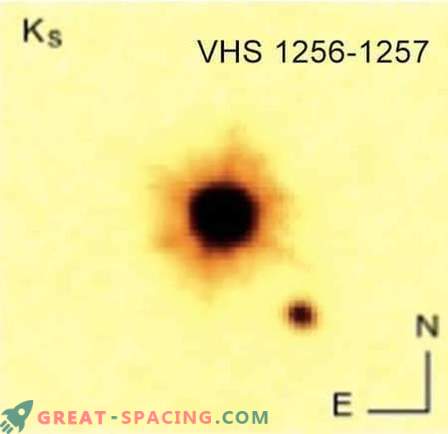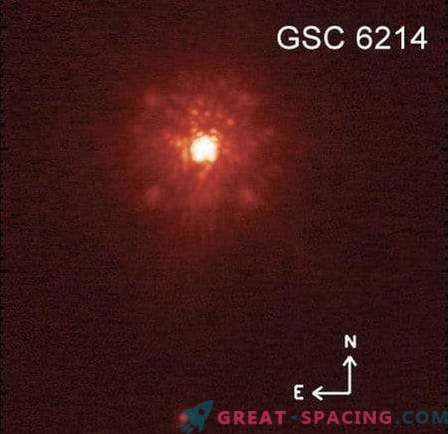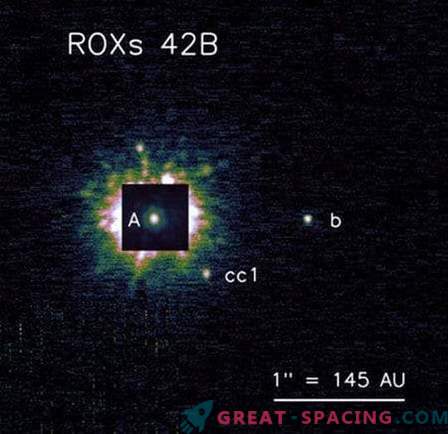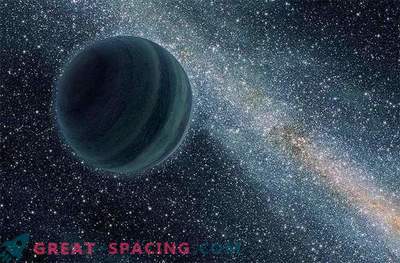
Observing exoplanets is a complex process. The light from the parent star overshadows the glow of the planet itself, which distorts perception. It is not yet possible to display an object of terrestrial size, but scientists have managed to extract images of about 20 giants. They are called Planemo (planetary mass satellites). They are heavier than Jupiter, located farther from stars in orbit, and young enough to maintain the glow from the heat.
But here the main question arises: are we looking at the planets or are the “failed stars” brown dwarfs? The latter are formed like stars from destroyed gas clouds, but they do not have enough mass to catch fire and shine with starlight. They can be found in space travel or next to other stars. The smallest ones resemble Jupiter and will appear as planets.

The satellite of the planetary mass VHS 1256-1257 b (bottom right) and its star (center)
Scientists from Caltech have decided to try a new approach. They calculated the rotational speeds of the three sealed planes and compared them with the speed of rotation of small brown dwarfs.

The satellite of the planetary mass GSC 6214-210 b (below) and its star
Measurements show that according to some characteristics massive planets resemble brown dwarfs. The researchers used the Keck Observatory (Hawaii) to determine speeds for the ROX 42B b, GSC 6214-210 b and VHS 1256-1257 b. For this, a near-infrared spectrometer (NIRSpec) was used, which helped to scatter light from objects. As it rotates, the light from the side turned to us shifts to shorter and more blue waves, and on the backward - longer and more red. The degree of displacement demonstrates the speed of a rotating body. The data showed that the speed of the three planes reached 6-14 km / s, which converges with the indicators of solar gas giants.
Information was compared with data from brown dwarfs. It turned out they can not be distinguished. That is, the planet rotates around the axes at the same speeds as the brown dwarfs.

ROXs 42B b (right) satellite and star (left)
From here two options follow. Perhaps the planome is brown dwarfs. Or, the study examined the planets that were formed as planets from disks of material, but for some reason their speed coincided with brown dwarfs.
It also turned out that the satellites rotate more slowly than expected. Perhaps in the process there was a “brake”. Further observations will help answer your questions.











































